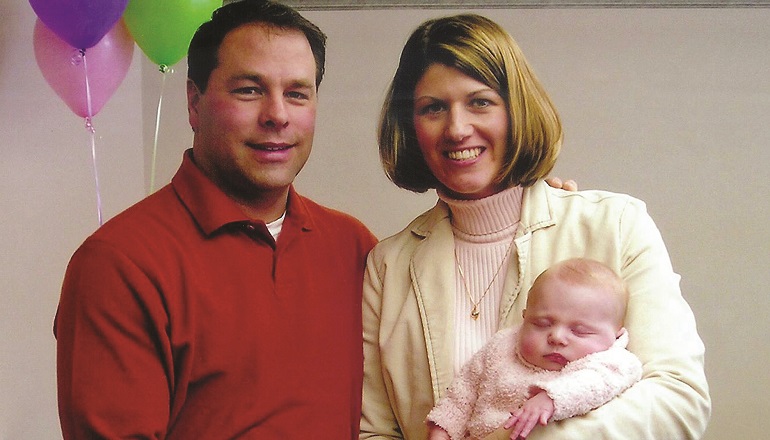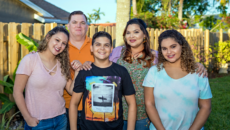As adoptive parents know, the light at the end of the tunnel is truly worth it—parenthood! But our journeys may be filled with twists and turns, and, possibly, a detour or two. In the U.S., a family may be matched with an expectant mother who decides not to place her baby with them (or not at all), or experience a foster placement that does not lead to adoption. In overseas adoption, families occasionally report having to switch programs or countries.
The good news is that almost every prospective parent who faces such challenges goes on to adopt. Almost universally, these parents say they wound up with the child who was “meant to be” theirs. We spoke with experts and parents about what you might expect going in, how you might lessen your risk of an unsuccessful adoption, and how to move on to your ultimate goal.
DOMESTIC ADOPTION: Good Communication Is Key
When parents adopt a newborn in the U.S., they’re matched with a prospective birth mother, not with a child. Many pregnant women explore adoption, and many change their minds along the way—choosing to parent, making a kinship arrangement, or selecting a different family to adopt the child. Thus, adoptive parents may begin working with an expectant mother who later changes her mind. Most of these false starts happen soon after the match is made, before it’s progressed beyond a single, casual conversation. But, of the families who reported one or more false starts in Adoptive Families’ Cost & Timing of Adoption Survey, about 10 percent said the match fell through after they had built a relationship with a prospective birth mother over three or more months, and, nine percent, after the birth of the baby.
Adoption attorney Gregory Franklin says there are no surefire ways to avoid a false start, but he advises parents to mitigate the risk by working with experienced professionals who are very familiar with the process. Good communication between all the parties is a must. He and other experts believe that very young birth mothers are more likely to change their minds about an adoption plan. Parents should also proceed with caution if the adoption plan is not supported by the birth father and birth grandparents. Appropriate counseling can help the expectant mother feel sure about whichever decision she makes.
“My advice to prospective families would be to know the laws of the expectant mother’s state, and to openly discuss those worst-case scenarios with your social worker or lawyer,” says Michelle Datsko, of King of Prussia, Pennsylvania. “I would rather know the risks than turn a blind eye in hope that everything will be fine.”
Acceptance of a setback is not easy. Joni Mantell, director of the Infertility and Adoption Counseling Center, helps parents see that what happened was specific to this situation alone. It does not happen every time, and there will be a successful placement in the future. “One hundred percent of the time, if you stick with the process and work with a legitimate adoption attorney or agency, you will adopt,” she says. She encourages parents to mark the loss, accept what is not to be, and continue down the path.
The way you process the loss is a matter of personal preference. Some, like the Datskos, prefer to jump right back into the waiting pool. “We saw no advantage in lingering off the list. We knew we would heal best by believing that we’d be a family before too long,” she says. She and her husband adopted their son two months after a match fell through. Gina Felhofer and her husband, on the other hand, took some time for “self-care” after each of their two false starts. “We went on a weekend trip and I took some time off from work. We questioned whether domestic adoption was a good fit for us. The answer was yes,” she says. “We wanted a connection with our child’s birth family, and our desire to be parents far outweighed the heartbreak of a placement that wasn’t meant to be.” Two months later the Sturgeon Bay, Wisconsin, couple were matched with their daughter’s birth parents. “We can’t imagine it any other way.”
If a match with a prospective birth mother doesn’t lead to adoption, you might:
- Join a U.S. waiting parents group. You can connect with more than 1,000 families in the “U.S. Newborn Waiting Parents” group on adoptivefamiliescircle.com.
- Consider how soon to pursue another placement. You’ll want to determine your emotional readiness—do you want to put your profile on hold and take a break?—but also think about the logistics—does any of your paperwork expire after a certain time? Will your spot in the pool be preserved?
- Share your loss with the next expectant mother. Your openness can create intimacy and allow honest communication about the status of this new placement.
INTERNATIONAL ADOPTION: Don’t Narrow Your Focus
The landscape of international adoption can change rapidly. Since the U.S. and more than 70 other countries around the globe have become party to the Hague Convention on Intercountry Adoption, several sending countries have changed parent guidelines or altered their process, or are in the process of doing so. Others have closed to international adoption entirely. In the most recent AF Cost & Timing of Adoption Survey, 16 percent of international adoptive families reported that they switched countries or switched programs within a country.
Some waiting parents become attached to the idea of a particular country or culture, according to Mary Ann Curran, Vice President of Social Services for WACAP. “They get a firm idea of their child-to-be. When things change, they grieve for that fantasy child they have been building their hopes and dreams around.” Curran helps people to refocus on their original goal of becoming a parent and to realize it is still attainable. She tells them, “You will be parents!”
Alicia Hammock, of Oregon City, Oregon, can relate. She, her husband, and their two children were “reading about Vietnam and making local connections.” Their agency was ready to send in their dossier when that country’s program went on hold and, ultimately, closed. She recalls, “We were prepared for adoption to be a journey, but this setback, coming after we were so far into it emotionally and financially, was startling and put me back into the days of infertility.” After switching agencies and countries, however, they found they could apply much of the paperwork they had already compiled. Now she says, “Our son is the most amazing boy. I can truly say it all happened for a reason.”
Some families find that their chosen country offers a viable route if they’re willing to expand their parameters. Stephanie McNett and her husband were in the process of adopting a second daughter from China when wait times began to lengthen. After careful consideration, they switched to the special-needs program. “It took some thinking about what we could handle,” she says “And we had to explain to our daughter that she would be getting a brother instead of a sister, but everything turned out fine.”
Flexibility about the desired country of origin, ethnicity, age, and special-needs status of their prospective child may be helpful, but Curran urges parents to broaden their vision thoughtfully. “Some parents accept a big mismatch in their desperation to bring home a child,” she notes. A couple that began the process hoping to adopt a baby may not be equipped to parent a six-year-old with medical needs.
Other parents decide to change routes entirely and adopt within the U.S., though this decision may require a new mindset. “A lot of people who were planning to adopt internationally were not thinking about communicating with birth parents,” cautions Mantell. “If they switch to domestic, they need to know there is no such thing as a closed adoption anymore. Birth parent contact brings many benefits, but there can be a big learning curve.”
International adopters should take practical precautions before diving into the process, including:
- Before you sign on with an agency, ask how it responds to changes in country programs. Ask if your “place in line” can be transferred to another program or country.
- If you need to switch countries, find out which pieces of paperwork need to be redone. If the Hague status is the same for both countries, some of the paperwork may be transferable. Some agencies will rework your homestudy for new requirements or for a new country for little or no fee.
- Ask your agency which fees, if any, are refundable. If a country closes its adoption program or restricts certain individuals from adopting, switching agencies won’t help. If you change routes, or wish to adopt from a country your original agency doesn’t work in, however, you will have to search for a new service provider.
FOSTER ADOPTION: Pursue an Adoptive Placement from the Start
When you adopt from U.S. foster care, understanding the system and setting realistic expectations can prevent disappointments. If adoption is your end goal, apply to a foster-to-adopt (also called fost/adopt) program, rather than signing on to be a foster parent and hoping that a child placed in your home will eventually become eligible for adoption. In a traditional foster care placement, the desired outcome is typically reunification with the child’s birth family. In contrast, when a child is placed through fost/adopt, social services has already decided that adoption is in the child’s best interest, and parental rights have already been, or are likely to be, terminated. Prospective fost/adopt parents need to be licensed as foster parents and be pre-approved for adoption.
Of course, it isn’t always possible to protect against heartache. Losing a child you parented for months or years, and had hoped to adopt, is devastating. Nearly a third of families who responded to the most recent AF Cost & Timing of Adoption Survey reported one or more placements that did not end in adoption. Carol Hare, of Belpre, Ohio, accepted a placement of a five-day-old baby girl. “At the beginning, I thought the baby might be reunited with her birth parents. But as time went on, and it looked like we might be able to adopt her, I began to hope.” When the baby was 18 months old, however, a biological grandmother filed for custody. “It was especially difficult for us when she left, because I have a 14-year-old adopted from foster care, and I had to explain the decision that the judge had made,” says Hare.
Kathy Ledesma, National Project Director of AdoptUSKids, recommends that families take time to heal if a placement falls through, because they’re mourning a specific child. “Approach your next placement in a new way,” she advises. “Remember that each child is an individual. He or she won’t be a replacement for the child you weren’t able to parent.”
To move forward with an adoption from foster care:
- Send the child’s belongings with him. If that’s not possible, donate them to a local foster home or charity.
- Turn to your support system—your caseworker, or friends and family who knew about the placement and may have met the child. Speak openly with family members and assure them of your readiness for another placement. They may fear seeing you get hurt again.
- Go through pre-adoption training classes again. You will have fresh eyes and be more open to the information that’s offered this time around.
- Consider rearranging bedrooms, to give a new child a different space and minimize your transference of feelings from one child to another.
The Long View of Adoption:
When a prospective or actual placement doesn’t end in adoption, do not see it as a failure. In the end, the twists in the road to parenthood build resiliency, a trait that will be helpful when it’s your time to parent. In fact, the feeling of adopting the child who was “meant to be” is shared by almost every parent who went through such challenges.
“As much as I hated it whenever people said ‘maybe next time’ or ‘it just wasn’t meant to be,’ it was the truth,” says Stephanie Welte, of Brownsburg, Indiana. “I wanted to have a good relationship with the birth mother of our child and we do. I can’t imagine our having a similar relationship with any of the other expectant moms we were matched with. And, of course, I can’t imagine having another baby! If any of those adoptions had been successful, I wouldn’t have my Kayla.”




